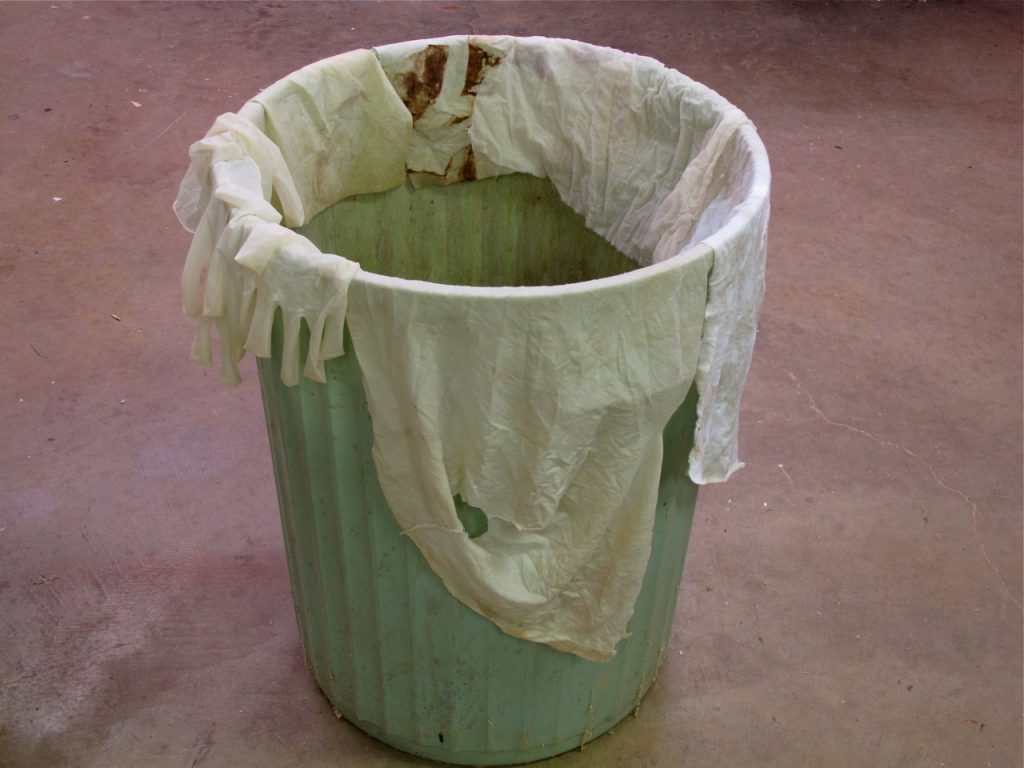We may receive a commission when you use our affiliate links. However, this does not impact our recommendations.

When I’m using a finish with linseed oil or an oil-based stain, I drape the rags only one layer thick over a trashcan until they dry hard. Then I safely put them in the garbage.
I’ve written about the dangers of linseed oil rags starting fires many times. But because many readers of this blog use wipe-on stains and finishes that contain linseed oil, the warning can’t be repeated too often. Manufacturers are not good at all about placing warnings on their containers.
I thought of this danger recently when I came across a news article telling of fire in a small Wisconsin woodworking shop started by linseed oil rags. This led me to a video from ABC showing the spontaneous combustion of some rags placed in a cardboard box. In just over three hours they had self-ignited.
You need to be aware that a number of finishing products we use contain linseed oil. These include Danish Oil and oil-based stains.
The first time I heard of Danish Oil (specifically Watco) being responsible for a fire was many years ago. It happened in Connecticut. A family had finished coating a floor with Watco and gone to bed after placing the rags they had used in a trashcan. Three members of the family died in the fire that resulted.
Another case with Watco occurred in a woodworking shop several doors down the street from mine. A friend had been using steel wool soaked with Watco to finish a project. He left the steel wool on his workbench and several hours later it started smoking. That got his attention.
Another case I knew of happened in California. In order to comply with the stricter VOC laws there, Minwax had started replacing some of the solvent in their stains with linseed oil. My friend had used Minwax stain for years and typically just threw the rags into the trash. This time a fire started in the middle of the night and nearly destroyed his shop. No one was hurt. There was no warning on the cans.
I talked to the National Fire Protection Association about tung oil. They told me that tung oil doesn’t spontaneously combust like linseed oil. I still treat tung oil as if it does, though.
One caveat: Varnish doesn’t spontaneously combust, and many companies market their varnish as “oil.” For example, Waterlox, General Finishes, Minwax and Formby. You don’t have to worry about spontaneous combustion with these products. If a puddle of finish on the can or other non-porous surface dries hard in a few days and doesn’t wrinkle, it’s varnish. On the other hand, if you’re not sure, it never hurts to take the precautions as if it’s linseed oil.
Take the danger of linseed oil seriously.
Here are some supplies and tools we find essential in our everyday work around the shop. We may receive a commission from sales referred by our links; however, we have carefully selected these products for their usefulness and quality.










Yes! All linseed oil products. The dryers have nothing to do with the spontaneous combustion.
hello:
Are you referring to all linseed oil products.
or just the products with drying agents added to speed drying?
I am using food safe raw linseed oil. takes many days to dry.
Thank you,
Ouida Vincent